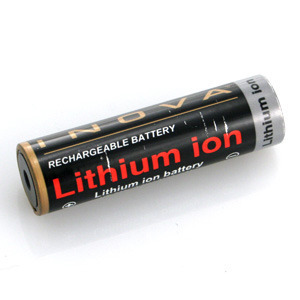Lithium Ion Battery
A Lithium Ion battery is a type of battery that is rechargeable and lasts longer than any other type of rechargeable battery currently on the market. Lithium Ion batteries are used for a wide variety of applications and are currently extremely popular due to their ability to be used in a wider range of temperatures than Nickel-Cadmium batteries and be charged more times. Lithium Ion batteries are used in digital devices and portable mechanical devices alike and can be charged over 1,000 times.
How Lithium Ion Batteries Work
Lithium batteries consist of a positive end (anode), negative end (cathode), and a pathway (electrolyte). The anode of a Lithium Ion battery is made of graphite or another form of a carbon, while the cathode is made of a metal oxide that usually consists of lithium cobalt oxide, lithium iron phosphate, or lithium manganese oxide. The electrolyte is always a lithium salt dissolved in an organic solvent, as safety issues arise when using pure lithium.
In a typical battery, ions (particles of energy) flow from the cathode to the anode in a one-way process. In a Lithium Ion battery, however, a charging circuit is able to apply a greater amount of voltage to the ions than the battery produces and forces the ions to travel back from the anode to the cathode, where they attach to the porous material of the metal oxide. This process can be repeated hundreds of times before the battery gives out.
Applications
Lithium Ion batteries are used in a wide variety of products, such as MP3 players, flash lights, power tools, laptops, and even watches. Lithium Ion batteries are available in virtually every size, but require the proper sized charger in order to be recharged. Lithium Ion batteries are generally preferred over other types of rechargeable batteries because they are lighter, have no memory effect, and do not contain any free lithium metal, making them one of the most environmentally-friendly batteries currently on the market.



Comments - No Responses to “Lithium Ion Battery”
Sorry but comments are closed at this time.